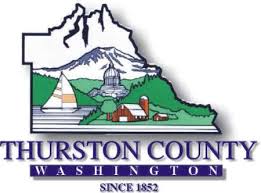08
Jan
Thurston County, Washington Bans Neonics from County-Managed Lands
(Beyond Pesticides, January 8, 2015) At the close of 2014, Thurston County in Washington State became the first county government to ban the use of neonicotinoid insecticides on county-owned and managed lands. The ban comes in the form of an amended pest and vegetation policy and was passed by County Commissioners by a 3-0 vote in favor of the amendment. According to The Olympian, the ban will impact 77 acres of county facilities, 2,646 acres of parks, 47.1 miles of trails, and one mile of right-of-way landscape.
Commissioners instituted the ban because of concerns over the pesticides effects on pollinators. Neonicotinoids (“neonics”) are a relatively new class of insecticides that share a common mode of  action that affect the central nervous system of insects, resulting in paralysis and death. They include imidacloprid, acetamiprid, clothianidin, dinotefuran, nithiazine, thiacloprid and thiamethoxam. Recent scientific research has uncovered many uncertainties and new information on neonic-induced adverse impacts with regard to the environmental fate and sublethal exposure on foraging behavior of pollinators.
action that affect the central nervous system of insects, resulting in paralysis and death. They include imidacloprid, acetamiprid, clothianidin, dinotefuran, nithiazine, thiacloprid and thiamethoxam. Recent scientific research has uncovered many uncertainties and new information on neonic-induced adverse impacts with regard to the environmental fate and sublethal exposure on foraging behavior of pollinators.
Thurston County’s ban is not the first time the county has taken up the issue of neonics in defense of pollinators. In 2013, the Commissioners petitioned the Washington State Department of Agriculture (WSDA) to restrict the sale, use, and application of neonics. Reasons for the petition included substantial bee colony loss in 2012, however, the petition was rejected.
County Commissioner Sandra Romero, told The Olympian that the Commission decided to take matters into its own hands, saying, “The goal of [the ban] is to send a big message to the public. . . We feel that it is a big enough issue and there could be a crisis if we have more bee colony collapses, more sick hummingbirds, more loss of our bats. All of the pollinators are in jeopardy.”
While Thurston is the first county in Washington State to take action against neonics, cities within the state have led the way in protecting pollinators against the dangerous pesticides, including Seattle and Spokane. Outside of Washington, Eugene (Oregon), Skagway (Alaska), Ontario (Canada), and the European Union have all instituted either permanent or temporary bans on the use of neonics.
Meanwhile, federal action to curb threats to pollinators posed by neonics remains sluggish. Some promising steps have been taken, such as the ban of neonics on National Wildlife Refuges and the issuance of a Presidential Memorandum, Creating a Federal Strategy to Promote the Health of Honey Bees and Other Pollinators, and establishment of a corresponding White House Task Force. However, federal agencies, such as the U.S. Department of Agriculture and Environmental Protection Agency remain hesitant to take meaningful action.
As federal efforts languish, local efforts like the Thurston County bans provide a promising opportunity for communities across the United States to stand up for pollinators. Visit Beyond Pesticides’ BEE Protective webpage to learn more about the issue and what can be done to protect pollinators.
All unattributed positions and opinions in this piece are those of Beyond Pesticides.
Source: The Olympian










